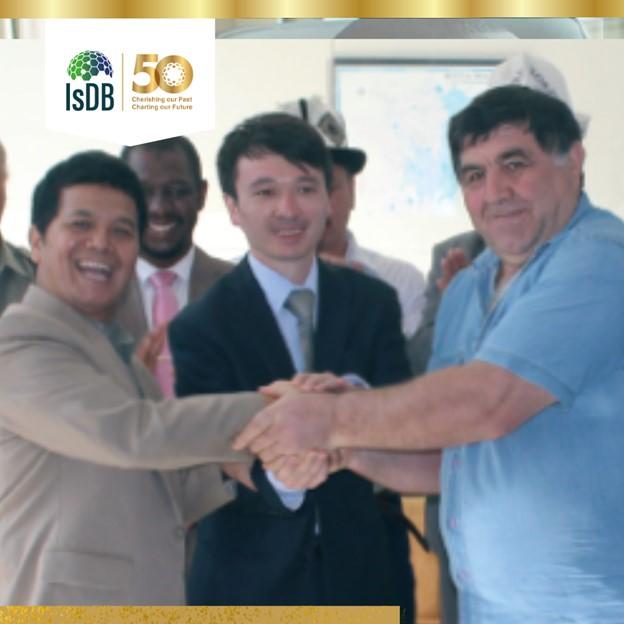Empowering Local Farmers: A Kyrgyz-Indonesian Collaboration Herds a Brighter Future
Nestled amidst the breathtaking landscapes of Central Asia, the Kyrgyz Republic, a nation where agriculture pulsates through its veins, grapples with a critical challenge. Despite employing 40% of its workforce, agriculture, with livestock as its cornerstone, contributes only 20% to the GDP. The Kyrgyz people, steeped in a rich agricultural tradition, now stand at a crossroads. Outdated technology, limited resources, and a lack of modern breeding techniques threaten to hold back their potential.
Recognizing this urgent need for transformation, the Kyrgyz Republic embarked on a groundbreaking collaboration under the Islamic Development Bank's (IsDB) banner. This project, a shining example of South-South Cooperation, brought them together with Indonesia, a nation renowned for its advancements in livestock breeding through the Singosari National Artificial Insemination Centre (SNAIC).
The IsDB, a champion of collaboration among its member countries, played a crucial role. Building on the foundations laid by the 1981 Makkah Declaration's call for strengthened cooperation, the IsDB's Technical Cooperation Program, further amplified through the "Reverse Linkage" initiative, provided the perfect platform. This innovative approach fosters a mutually beneficial exchange of knowledge, where recipient and provider nations work together. Here, the Kyrgyz Republic, the recipient, would gain access to Indonesia's expertise, while Indonesia, the provider, could showcase its advancements on an international stage.

The collaboration thrived on the perfect synergy between the two partners. The Kyrgyz Scientific Research Institute of Livestock and Pastures (KSRILP), though dedicated, was constrained by outdated methods, producing a mere 10% of the country's frozen semen needs. On the other hand, SNAIC boasted a production capacity exceeding 3.5 million high-quality doses annually, backed by a team of over 100 specialists and decades of experience.
The IsDB, leveraging its strong relationship with Indonesia, facilitated knowledge and resource exchange through a Memorandum of Understanding. Further solidifying the commitment, both countries contributed financially, demonstrating a shared vision for success.

From 2015 to 2018, this transformative project revolutionized the Kyrgyz livestock sector. A series of targeted training sessions empowered Kyrgyz experts and technicians in artificial insemination program management, animal reproduction techniques, and the establishment of progeny testing systems tailored to their local breeds. This capacity building was bolstered by the procurement of essential equipment and high-quality frozen semen from Indonesia, laying the groundwork for sustainable livestock development.
The project's impact transcended immediate needs. It ushered in the use of cutting-edge frozen semen production technology and established an effective nationwide distribution network. This leap forward in genetic improvement practices promises a significant boost in the quality and productivity of local livestock breeds. Ultimately, it will empower farmers and communities across the nation by enhancing their income and food security.
The culmination of the project saw a revitalized KSRILP ready to spearhead the national artificial insemination program with newfound capabilities and a robust distribution network. This achievement resonated with a key stakeholder who remarked, "At the end of the project, KSRILP will be able to develop the national artificial insemination program...improving the genetic make-up of local breeds."
This venture extends far beyond the Kyrgyz Republic. It cements Indonesia's position as a frontrunner in innovation and solidarity within the IsDB. The Kyrgyz-Indonesian success story serves as a blueprint for future initiatives, showcasing the transformative power of South-South cooperation in tackling common challenges and unlocking shared opportunities.
The journey of the Kyrgyz Republic and Indonesia serves as a powerful reminder of the boundless possibilities that arise when nations collaborate in pursuit of shared goals. The legacy of this project extends beyond immediate gains in livestock productivity, embodying a broader vision of prosperity, innovation, and mutual support within the global community.